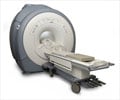Functional magnetic resonance imaging (fMRI) can help identify if an individual is lying much better when compared to the traditional polygraph tests. The test further highlights certain specific brain regions that light up when a person tells a lie. Researchers from Temple University Hospital in Philadelphia have conducted the interesting research. The results appear in the latest issue of Radiology.
The standard polygraph test is based on the apparent manifestation of certain emotions associated with lying such as increased perspiration, change in body position and subtle facial expression. A majority of the liars can however, mask these emotions with practice. Because of the same reason, there is a compromise in the consistency and accuracy of the results. It is currently the gold standard method of lie detection.The researchers recruited 11 subjects for the study, who witnessed the staging of a mock shooting (firing of blank bullets) in a test room. 5 of the study participants were asked to tell the trust while the rest were required to lie deliberately. All these individuals were assessed both with fMRI and the standard polygraph test. Activation of specific brain regions and breathing rate, cardiac activity and rate of perspiration were studied.
A comparative analysis of both the groups revealed that the fMRI produced reliable results in a majority of the cases (92% accuracy). Specific regions of the brain were repeatedly activated during deception to mask or conceal the areas associated with truth telling. Infact, fewer areas of the brain were activated during truth telling (7) than during deception (14). The frontal lobe was found to be very active in deception and inhibition of truth.
The main advantage of employing fMRI in lie detection is that a lying individual cannot control the activation of the brain. Therefore this form of lie detection would represent an ideal test that can be used in a court, crime investigation and prevention. The finding could eventually pave way for a rejuvenation of the existing legal system.










